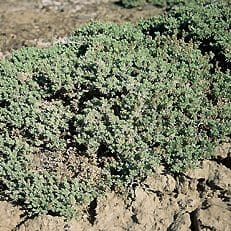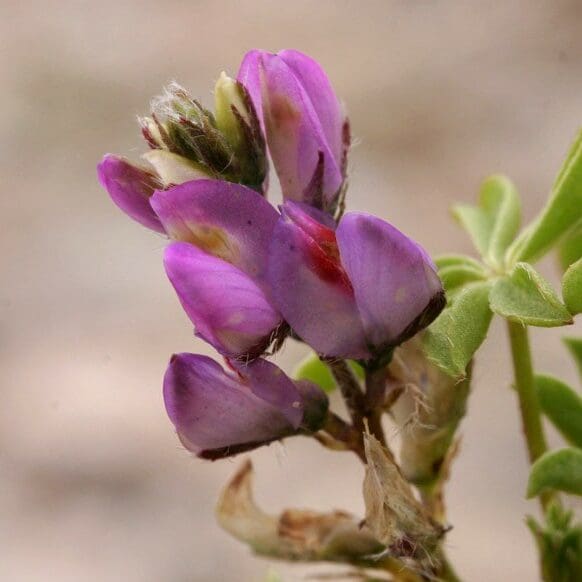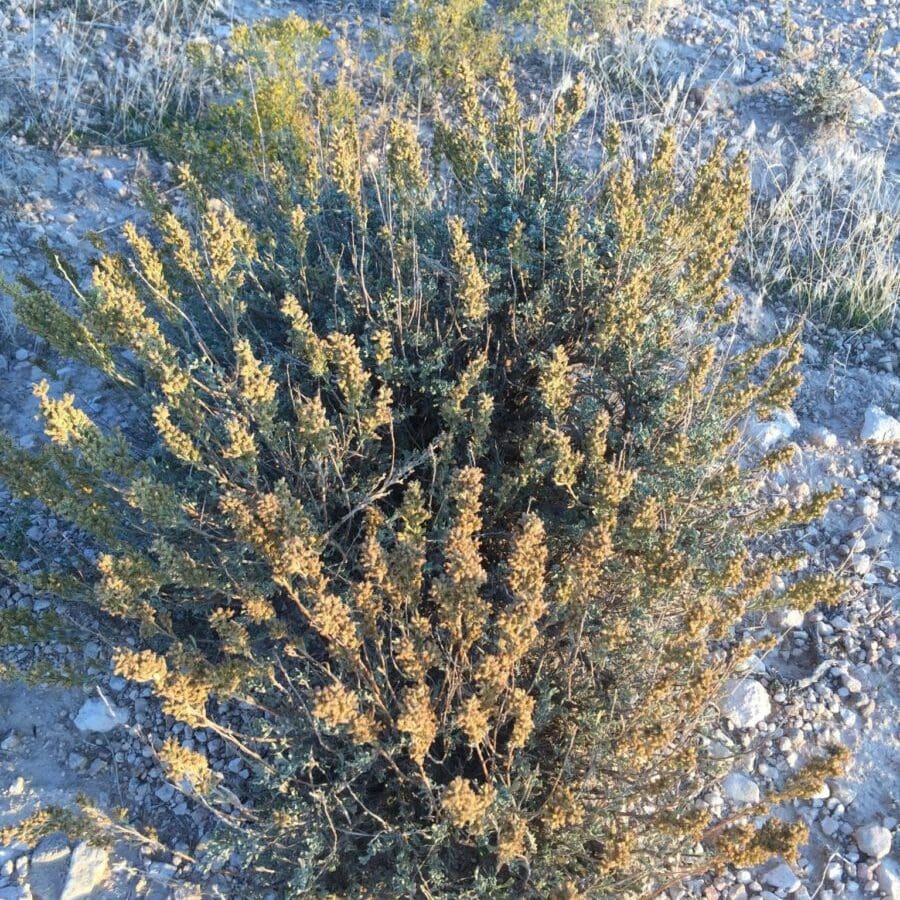Mat Saltbush
Mat Saltbrush
- Scientific name: Atriplex corrugata
- Important forage for wildlife during winter
- Ability to grow on fine textured, saline soils
- Helps reduce soil erosion on sites that are inhospitable to many shrubs
- Tolerates up to 13,000 ppm soluble salts
- Often the only perennial plant present in high-saline environments
Out of stock
Mat Saltbush (Atriplex corrugata), also known as Matscale, is a native, low dioecious shrub that forms dense, prostrate mats. Prostrate branches often form adventitious roots when in contact with the soil. Bark is soft, spongy, and white. Its ability to grow on fine textured, saline soils helps reduce soil erosion on sites that are inhospitable to many shrubs. It also provides important forage for wildlife during winter when other sources of forage may be inaccessible.
This species will hybridize with other saltbushes. Mat saltbush forms intermediates with Atriplex confertifolia and Atriplex cuneata. Mat saltbush is an endemic of the Colorado Plateau and Uintah Basin, found mainly on Mancos shale formations in eastern Utah, western Colorado, and northwestern New Mexico between 1,200 and 2,100 m.
Mat saltbrush (Atriplex corrugata) grows on fine textured, often saline, soils. It tolerates up to 13,000 ppm soluble salts and is often the only perennial plant present in such high-saline environments. Patches of mat saltbush may alternate with patches of winterfat, cuneate saltbush, shadscale, black greasewood, budsage, and greenmolly summercypress (Kochia americana). It grows in areas with 150 to 280 mm of annual precipitation.
Because germination is near zero without cold treatment, fall is normally the recommended season for artificial seeding. Where possible, midwinter planting is also successful. Preparatory measures are usually unnecessary if the site previously supported mat saltbush and is not infested with weeds. Recommended seeding rates range between 2.2 and 4.5 kg of pure live seed/ha. Seed should be sown in separate rows and covered with a drag or harrow. Seeds should be planted near the soil surface and no more than 1.3 cm deep. Seedlings emerge rapidly and grow vigorously during the first year. Growth continues until soil moisture becomes limiting (usually by mid-summer).
Mat saltbush is valuable winter forage for wildlife and domestic livestock. It often grows interspersed among other plant communities on shale outcrops at medium elevations. Shrubs often grow on windblown slopes and provide important, accessible winter forage. Shrubs tolerate grazing and trampling and maintain vigor even after serious abuse. Mat saltbush has been seeded with selected grasses including Russian wildrye, tall wheatgrass, and crested wheatgrass.
This species is useful in revegetation and restoration projects and can help reclaim disturbed areas with heavy textured soils such as road construction sites or mine disturbances.
For additional information click on the “Quick Plant Facts” tab, download the .pdf associated with this species, or visit Utah State University Range Plants
For different variety options click here: Saltbush
Helpful Links
Additional information about this product can be found on the academic websites linked below.
Synonyms
Many plants have more than one common and scientific name. We've listed a few of them below.
- Mat Saltbush
- Atriplex corrugata
- Matscale
Who is Great Basin Seed?
Great Basin Seed is a seed company that specializes in seed sales and consultation for home, ranch, farm, range and reclamation. We have been a leader in the seed industry since 1974.
Our History
We've been in the seed business since 1974.
What We Offer
We offer seed for home, farm, ranch, range and reclamation projects.
Meet the Gang
We have the best employees in the world! We are proud of the work they do, and trust them to serve you!
Right: Company founder Lloyd and his wife Paula Stevens in a wildflower seed production field circa 1977
Quick Plant Facts
| Common Name: | Mat Saltbush, Matscale |
|---|---|
| Scientific Name: | |
| Lifespan: | |
| Origin: | |
| Plant Type: | |
| pH Tolerance: | |
| Seed Count | 60500 |
| Growth Height: | |
| Planting Rate: | |
| Min. Precipitation | 6 inches Minimum |
| Best Time to Sow: | |
| Max Sowing Depth: | |
| Growth Season: | |
| Sun & Shade Tolerance: | Full sun, Partial shade |
| Elevation of Occurance: | |
| Zone Map | comingsoon.gif |
| Hardiness Zones: |




